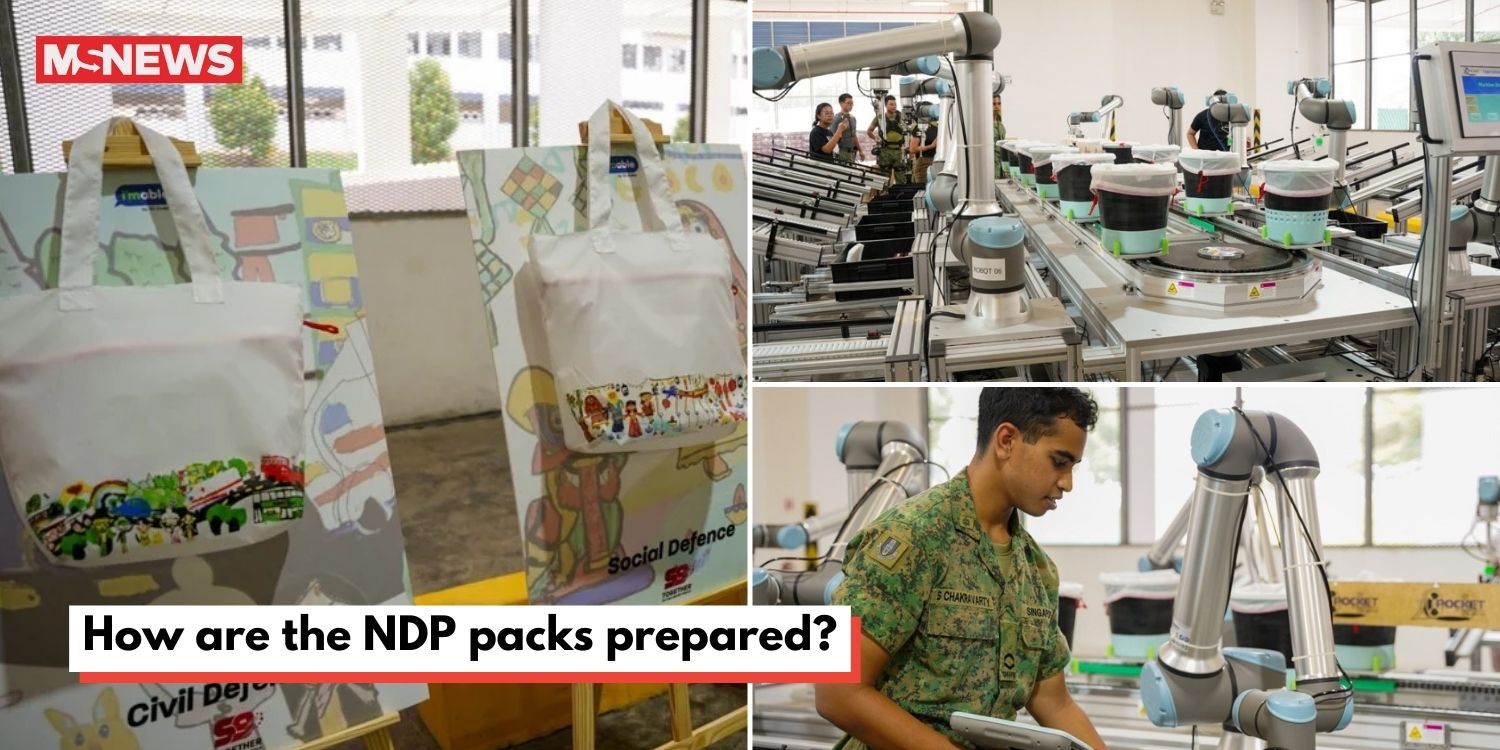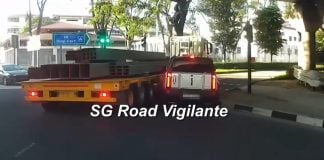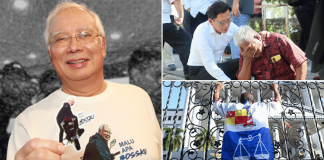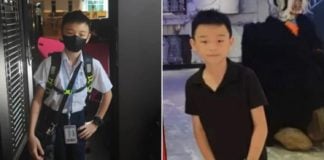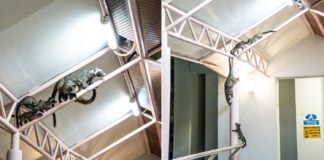NDP packing process of goodies includes the use of exoskeletons & an automated line
Singapore’s annual National Day Parade (NDP) is just around the corner, drawing us ever closer to enjoying the fireworks, the aerial displays by fighter jets — and of course, the freebies.
Each year, parade-goers will receive an NDP pack free of charge, consisting of items such as food, drinks and NDP merchandise.
However, there’s more to the NDP pack than just the goodies it contains, with hours of hard labour, manpower and advanced technology going into preparing the packs.
Here are five little-known facts about the packing process that might make you appreciate this years NDP goodies just a little more.
1. A fully automated robotic line prepares 1,250 packs a day
The packing process for these NDP packs is no easy feat — considering that more than 300,000 NDP packs have to be prepared for this year’s celebrations.
To help tackle such a large-scale process, humans and robots are working hand-in-hand.
After a trial back in 2022, the Singapore Armed Forces (SAF) has begun using an automated line to pack 20% of the NDP packs for visitors.
The other 80% of packs are manually prepared by soldiers in six separate lines. The Straits Times (ST) reported that 70 NSFs and regulars are helping to assemble this year’s batch of packs.
Meanwhile, the automated line — which is able to prepare 1,250 bags of freebies a day — consists of 10 robotic arms that have either suction cups or claws attached to them.
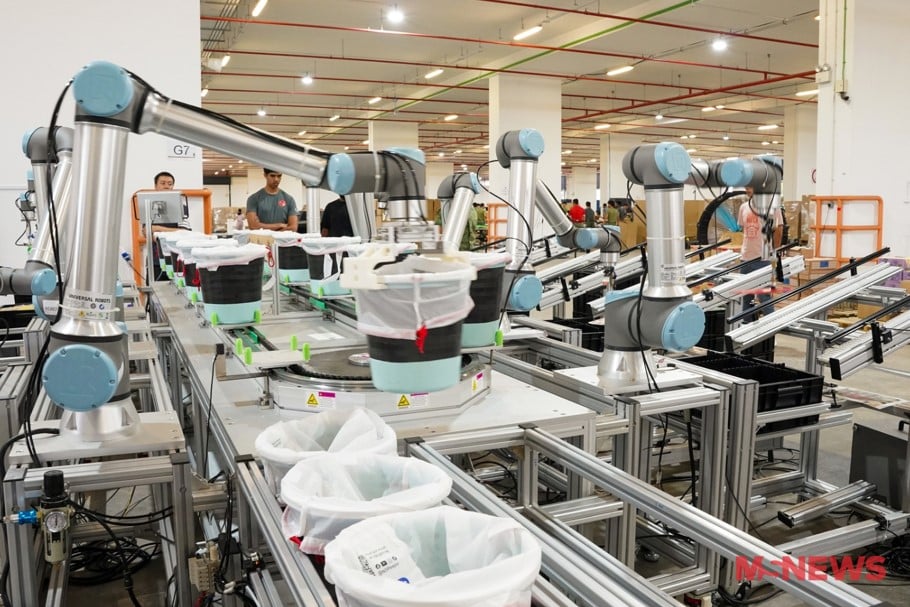
Using a suction system, the arms pick up each item which arrives via a conveyor belt. They then deposit them into the bag, stretched out over a small bin.
Following this, the robotic arms with claws pick up the bins and place them onto a tray for soldiers to inspect.
During moments whereby the items become misaligned, the line is able to stop completely, allowing those working in the area to rectify the issue.

On days where multiple such stoppages occur, the machines are still able to prepare a maximum of 1,000 bags.
2. SAF using exoskeletons for the first time in this year’s packing process
This year, soldiers are also using two types of exoskeletons to carry heavier loads such as crates containing the NDP packs.
The first type of exoskeleton weighs a staggering 10kg while the second, which NUS’ bio-robotics lab prepared, weighs 5 to 6kg.
Despite the weight of the suits, the exoskeletons are meant to ease the physical strain on the soldiers’ backs and their knees.
The exoskeleton suits are worn similar to a backpack, as the devices rest on the wearers’ shoulders and back.
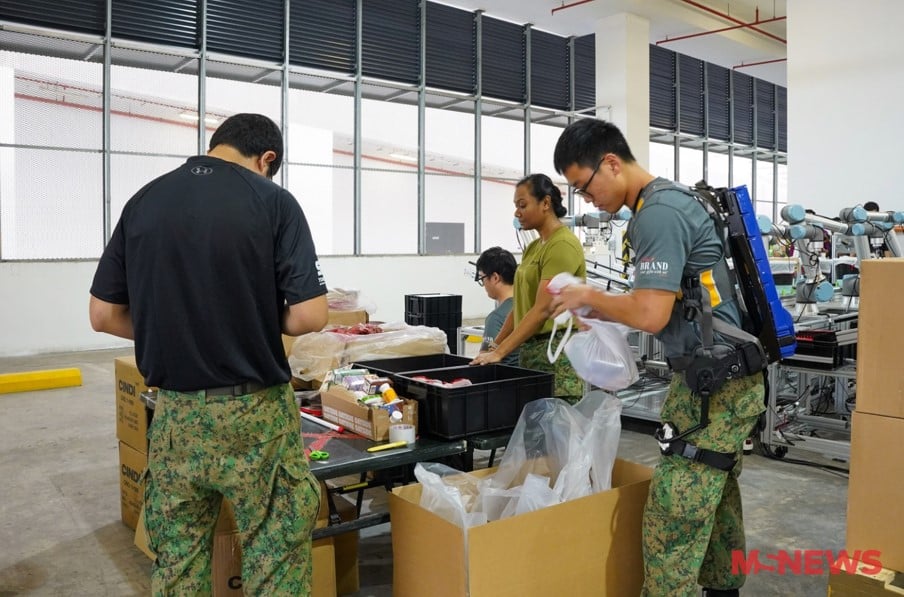
The exoskeletons are presently in a trial phase, during which the soldiers wear it in two-hour intervals.
Upon the conclusion of the trial, the SAF will gauge whether the exoskeletons could be used in its day-to-day operations.
Speaking about what it feels like to use the suit, 21-year-old Private (PTE) Muhammad Noor Hyder Bin Zaini noted that it lessened the effort needed to carry the crates.
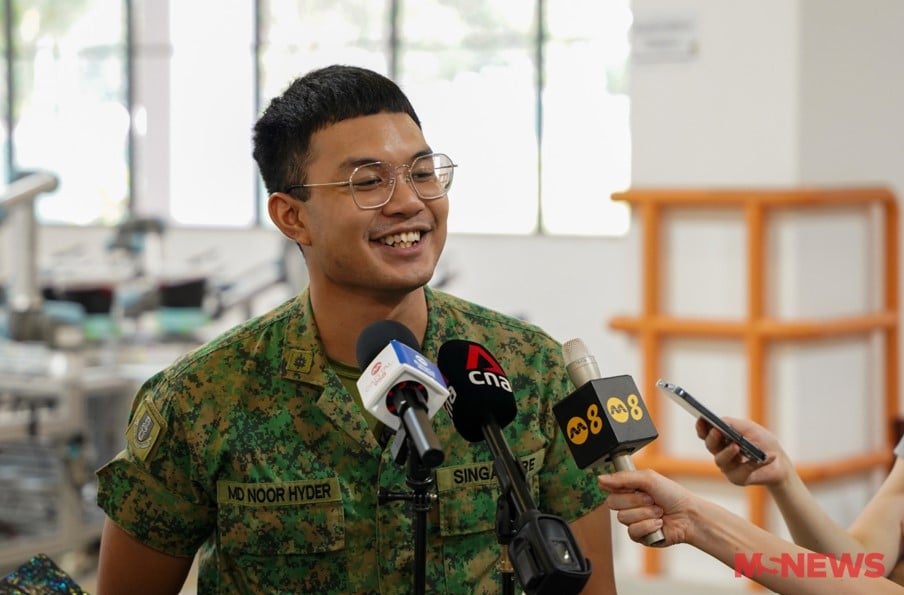
“It makes my job easier,” he shared. “Without the exoskeleton, I have to use a lot of strength and energy… it is very tiring.”
He added that the exoskeleton helps in supporting his back. It also reduced the strength needed to lift each load by half.
3. 30% reduction in manpower from usage of automated robots
Speaking to media on the usage of the automated line, Major (MAJ) Desmond Lim Jun Hao shared that it reduces the need for manpower by 30%.
Sponsors bear the cost of the automated robots, making it much easier to manage the resources needed to pull off the packing process.
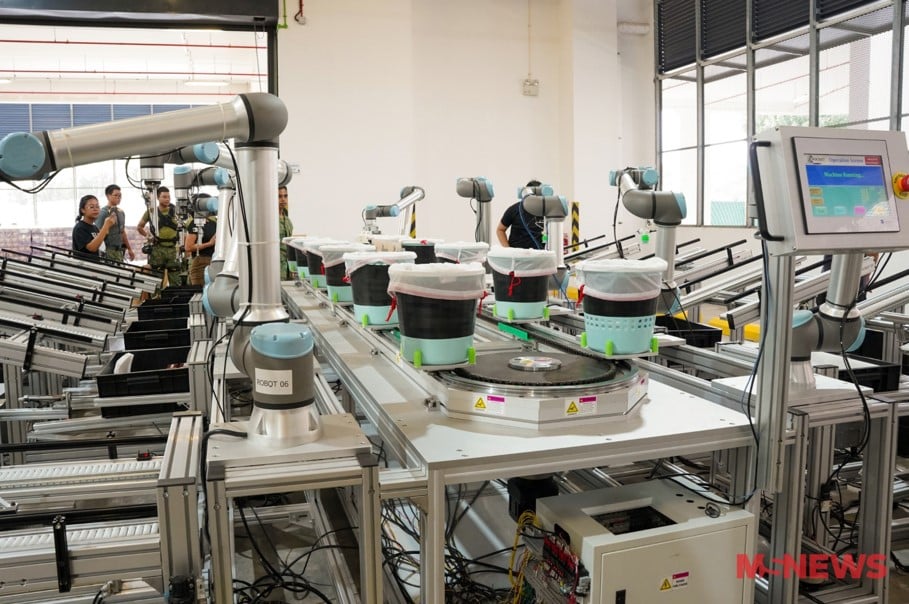
“With this implementation of technology, it does save in terms of cost and manpower… for the NDP packing operation,” he said.
He did note that both the automated and manual packing lines had the same amount of efficiency.
This is due to the automated line running at a slower speed to ensure that no mistakes take place.

“Moving ahead, I do think we want to improve the system or include more technology to make it run at a higher speed,” he said. “These are things we expect to see in the next few years of NDP.”
Ultimately, 10,000 NDP packs are ready for delivery at the end of each day, which forms a significant percentage of the freebies needed to provide parade-goers with.
4. Students came up with designs of bags
The work on this year’s NDP packs started way before the packing though, with students having a say in the bag’s design.
Reflecting the theme of “Together, as one united people,” 40 student artists with disabilities from 22 schools produced six different designs for this year’s NDP packs.
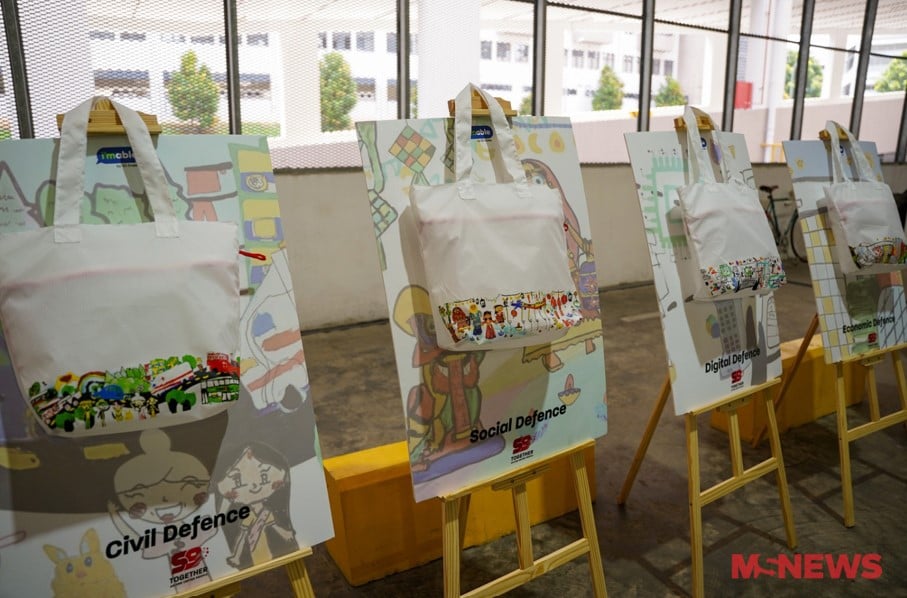
The six designs are inspired by the six pillars of Singapore’s Total Defence — which celebrates its 40th anniversary this year. These pillars are as such:
- Civil defence
- Digital defence
- Economic defence
- Social defence
- Military defence
- Psychological defence
The students were able to come up with the designs during a collaborative two-day workshop which the NDP Pack Committee and SG Enable facilitated.
The Temenggong Artists-In-Residence supported the initiative as well.
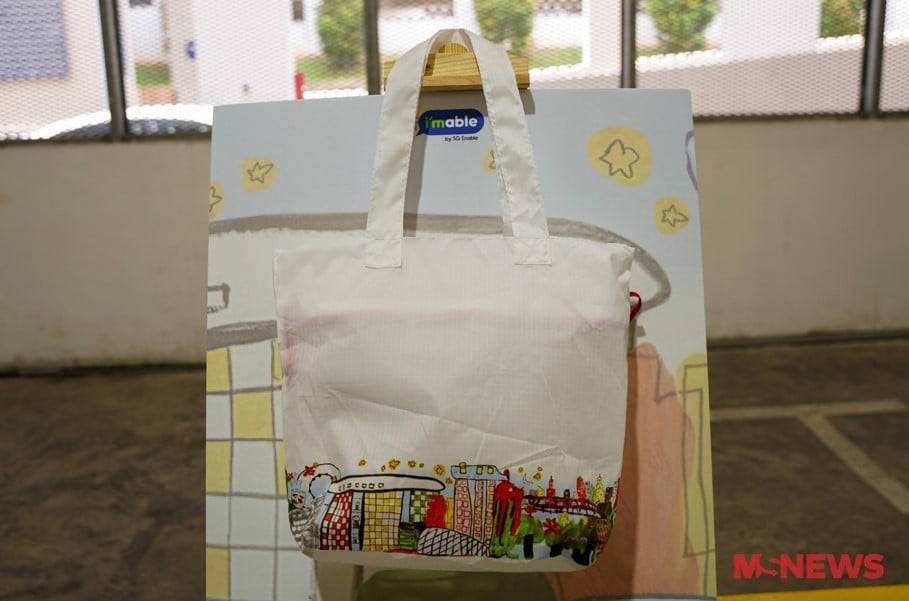
Each of the individual artworks contain elements that feel uniquely Singaporean — from the intricacies of our transport system to even our community cats.
Deeply personal in nature, they showcase our youth’s abilities to go above and beyond in pushing their creative boundaries, allowing parade-goers to reap the rewards.
Apart from the meaningful artwork, this year’s NDP pack has been thoughtfully designed with a commitment to sustainability.
The lightweight and reusable bag is also meant for daily use as it is foldable and compact, with drawstrings and an external pocket.
5. AI to enhance packing process currently under trial
MAJ Lim noted that each year, SAF actively looks into new technology it could bring in to enhance the packing process of the NDP freebies.
Such technologies are also necessary for the continuous improvement of soldiers’ safety and adapt to the ever-changing need of manpower in the army.
This year, the SAF has also trialled Vision Artificial Intelligence (AI), which makes use of a mounted camera on each robotic arm to detect the items before packing it into the bags.
Describing it as a “trial-and-error” process, MAJ Lim expressed his hopes of having more sponsors and soldiers with the training necessary for such a technology.
“Subsequently, we [hope to] implement Vision AI for next year’s packing,” he said.
Also read: 5 interesting things to expect at this year’s NDP Show segment
5 interesting things to expect at this year’s NDP Show segment
Have news you must share? Get in touch with us via email at news@mustsharenews.com.
Photography by Dinah Danisyah Mazli.
